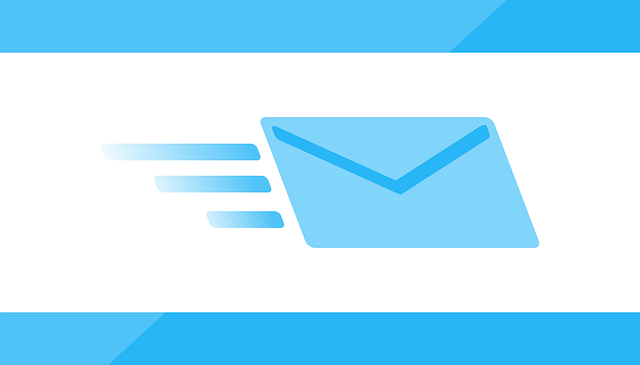Are your emails falling flat and failing to generate the desired response?
Don’t worry, you’re not alone. Many people make common mistakes in their email copywriting that can easily be avoided. In this article, we will uncover the seven most common mistakes in email copywriting and provide you with practical tips to rectify them.
So, buckle up and get ready to transform your emails into persuasive and engaging pieces of content that grab the reader’s attention from the very first line.
Picture this: you hit send on an email and eagerly await a response, only to be met with silence. Frustrating, isn’t it? Well, fear not, because we’re here to help you avoid these pitfalls. From lack of personalization to poor grammar and spelling errors, we’ll guide you through the dos and don’ts of effective email copywriting.
So, let’s dive in and uncover the secrets to crafting compelling emails that get results.
Key Takeaways
- Lack of personalization, jargon, lengthy subject lines, poor grammar, and spelling errors are common mistakes in email copywriting.
- Personalization improves open and response rates, emphasizing the importance of customized greetings.
- Simplifying language and avoiding complex language is crucial for clear communication.
- Clear and concise subject lines that grab attention and provide a sneak peek into the email content are essential for effective email copywriting.
Lack of Personalization
Don’t make the mistake of sending generic emails that lack personalization – it’s like talking to a room full of mannequins instead of real people. Customized greetings and personalized content are crucial in capturing the attention of your recipients and making them feel valued.
When you address your audience by their first name and tailor your message to their specific needs or interests, you establish a connection that resonates with them. It shows that you care about their individual needs and are not just another faceless company trying to sell something. By taking the time to personalize your emails, you can significantly improve your open rates and response rates.
Now, let’s move on to the next section about the overuse of jargon and acronyms.
Overuse of Jargon and Acronyms
Using excessive jargon and acronyms can leave your readers feeling like they’re lost in a dense fog, struggling to find their way through the message. It’s important to remember that not everyone is familiar with industry terms and abbreviations.
Instead, simplify your language to ensure clear communication. By avoiding unnecessary jargon, you allow your readers to easily understand your message and avoid confusion. Remember, the goal of email copywriting is to engage and persuade your audience. Using complex language can hinder this objective.
So, make it a point to use plain and straightforward language that your readers can easily comprehend. By doing so, you’ll create a more positive and effective email communication.
Speaking of clear communication, let’s now move on to discussing the importance of avoiding lengthy and confusing subject lines.
Lengthy and Confusing Subject Lines
A captivating subject line is crucial for grabbing your readers’ attention and avoiding lengthy and confusing email headings. When it comes to subject line optimization, clear and concise messaging is key. Your subject line should provide a sneak peek into the content of your email, making your readers curious and eager to open it.
Keep it short and sweet, focusing on the most important benefit or value you’re offering. Avoid using jargon and acronyms that might confuse your readers. Instead, use simple and straightforward language that anyone can understand. A subject line that is too long or convoluted will likely be ignored or deleted, so make sure to keep it concise and engaging.
Moving on to the next section about poor grammar and spelling errors, it’s important to proofread your emails carefully to maintain a professional image.
Poor Grammar and Spelling Errors
Improve your email communication by paying attention to grammar and spelling. Ensure that your messages are professional and reflect your attention to detail. Common typos and grammar mistakes can undermine your credibility and make your emails difficult to understand.
Here are five common mistakes to avoid:
-
Incorrect subject-verb agreement: Ensure that your subject and verb agree in number and tense.
-
Misplaced apostrophes: Don’t confuse "its" and "it’s" or "your" and "you’re."
-
Run-on sentences: Break up long sentences into smaller, more concise ones.
-
Lack of punctuation: Use commas, periods, and other punctuation marks to clearly separate thoughts and ideas.
-
Misspelled words: Double-check your spelling to avoid embarrassing errors.
By taking the time to proofread your emails, you can avoid these common mistakes and ensure that your message comes across clearly.
In the next section, we’ll discuss the importance of not ignoring the call to action.
Ignoring the Call to Action
Don’t ignore the call to action – it’s like leaving a trail unfinished or a song without a chorus.
When crafting your email copy, it’s crucial to include a clear and compelling call to action (CTA) that prompts your readers to take the desired next step. Failing to do so can result in ineffective email design and irrelevant content, rendering your efforts futile.
Your CTA should be concise, persuasive, and visually appealing, guiding your readers towards the action you want them to take. Whether it’s making a purchase, signing up for a newsletter, or downloading a resource, a strong CTA can significantly increase your email’s conversion rates.
So, make sure to carefully consider the placement, wording, and design of your call to action to maximize its impact.
Moving on to the next section about sending emails at the wrong time, let’s discuss another common mistake to avoid in email copywriting.
Sending Emails at the Wrong Time
Timing is everything when it comes to reaching your audience through email. Sending emails at the wrong time can result in your message getting lost in the shuffle or even worse, being deleted without being read.
To maximize the impact of your emails, it’s crucial to consider two factors: email frequency and email formatting. Bombarding your subscribers with too many emails can lead to annoyance and unsubscribe requests. On the other hand, sending emails too infrequently can cause your audience to forget about your brand. Finding the right balance is key.
Additionally, pay attention to the format of your emails. Make sure they’re visually appealing, easy to read, and optimized for mobile devices. By timing your emails strategically and optimizing their format, you can increase the chances of getting your message across effectively.
Frequently Asked Questions
How can I effectively personalize my email copy without coming across as too familiar or invasive?
To effectively personalize your email copy without appearing too familiar or invasive, you need to strike a balance between personalization and professionalism.
Start by using the recipient’s name and addressing their specific needs or interests. Tailor your content to their preferences and include relevant details that show you’ve done your research.
Avoid using overly casual language and be mindful of boundaries. By finding the right balance, you can create engaging and effective email personalization that connects with your audience.
What are some common jargon and acronyms used in email copywriting that I should avoid?
When it comes to email copywriting, avoiding jargon and acronyms is crucial. Imagine receiving an email filled with technical terms and abbreviations you don’t understand. It’s like being lost in a foreign country without a map.
To connect with your audience, keep it simple and relatable. Use language that everyone can understand. By doing so, you create a personal connection and make your message more impactful. Remember, the goal is to engage, not confuse.
Are there any strategies or tips for writing concise and attention-grabbing subject lines?
Crafting compelling email subject lines requires mastering the art of grabbing attention with concise wording. To excel in this, employ techniques such as personalization, urgency, and curiosity.
Use the recipient’s name or reference their previous interactions to make the subject line feel tailored. Create a sense of urgency by mentioning time-limited offers or limited stock. Intrigue the reader with a question or a teaser, compelling them to open the email.
Master these techniques for attention-grabbing subject lines that boost open rates.
What are some common grammar and spelling errors to watch out for when writing email copy?
When writing email copy, it’s important to watch out for common grammar and spelling errors. Punctuation mistakes are common, so proofreading is essential.
To ensure your emails are error-free, use proper punctuation marks like commas, periods, and apostrophes. Don’t forget to check for spelling errors too.
A tip for proofreading is to read your email aloud or ask someone else to review it. By avoiding these mistakes, your email copy will be polished and professional.
Can you provide some examples of effective calls to action that can be used in email copywriting?
To drive action and optimize conversions in your email copy, it’s crucial to craft compelling calls to action (CTAs). A/B testing different CTAs allows you to determine the most effective one for your audience.
Persuasive and engaging CTAs entice readers to take the desired action. For example, ‘Shop Now,’ ‘Get Your Free Trial,’ or ‘Download Now.’ Keep your CTAs concise and clear, ensuring they highlight the value and urgency of your offer.
Conclusion
In conclusion, mastering the art of email copywriting is crucial to effectively engage your audience. Avoid the common mistakes discussed above and watch your open and conversion rates soar.
Picture this: your email is a carefully crafted piece of artwork that speaks directly to the recipient, capturing their attention and guiding them towards your desired action. With personalized content, clear language, and perfect timing, your emails will be like a well-timed symphony, captivating your audience and leaving a lasting impression.
Don’t underestimate the power of a well-written email – it can be the key to unlocking new opportunities and achieving your goals. So, go ahead, put these tips into practice and elevate your email copywriting game to new heights. Success is just one click away!








